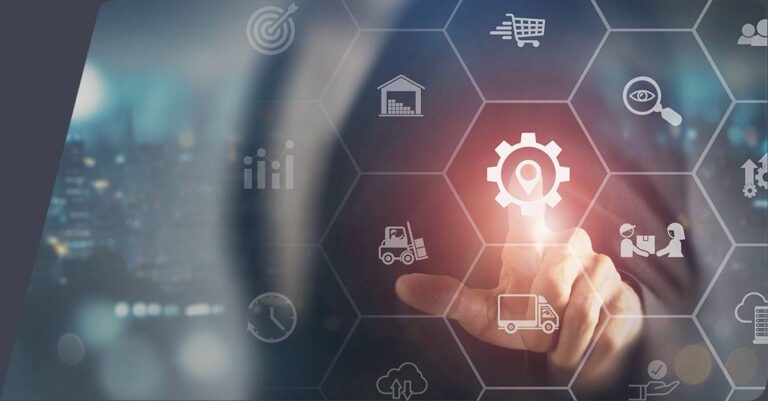Purchasing software is a set of tools that an institution can use to help with the procurement of goods and services. Modern procurement software includes digital features and tools that allow workers to request the best goods at the best possible price globally from anywhere in the world. As a form of construction and regulation, purchase orders frequently get employed in procurement.
By switching from a manual procurement system to an automated system, businesses can reduce inefficiencies, improve accuracy, and enhance overall procurement visibility. The automation built into procurement software eliminates unnecessary delays, ensuring real-time tracking, seamless approvals, and cost control.
More than this, purchasing management software allows your staff to request a purchase with remote access. Whether you are a large enterprise or a small business, employees will be able to efficiently and precisely tell your central procurement controller everything they need and when they need it, whether they are operating at a satellite office on a desktop or in the field on their mobiles. Setting up a spend management budget schedule in your center console allows you to also track all of your procurement activities across all departments in your company to streamline procurement operations.
With digital purchase requisition, you can communicate your preferred purchases to the supplier quickly and efficiently, without disappearing, leading to better communication and supplier relationships. You can also use digital acquisition software to request and endorse customer orders, select and command the product or service, obtain and match the receipt and order, and prepare the documentation needed for payment confirmation.
Key Features of Good Purchasing Software
Businesses seeking to upgrade their procurement process with digital systems should look for purchasing software that includes comprehensive records management, an ability to leverage data driven insights, versatile validation and vendor management, and catalog administration to improve operational efficiency.
Vendor Management
Purchasing software should also enable procurement teams to better harness strategic sourcing, selecting, browsing, and categorizing vendors who will meet the needs of the business. In other words, it should help a company create and manage a favored vendor list. Some of the tasks that procurement management software should be able to handle are evaluating a vendor’s success, monitoring an order, adhering to contracts, and hiring young vendors for better overall management.
Catalog Administration
A catalog is a collection of all the goods, services, representations, vendor names, and other information provided by a service supplier or vendor. As a result, customers can find the vendor who provides the services they require in a single location. Good procurement software should enable vendors to display their catalogs and potential clients to view them. Because the process of digitization of catalogs significantly benefits a business, purchasing software should be able to document it as well.
With all of this data, companies can gain objective insights into their transactions and reduce costs. Businesses can use the software to search for and discover the perfect deal on specific services and goods. All of this browsing takes place in a single location.
Gathering Data-Driven Insights
Many purchase order software solutions also allow procurement teams to gain an objective view of their inventory management processes. This occurs as a result of specifically created insights and analyses built into the software after comprehensive data collection. The information gathered pertains to several different facets of the purchasing process, including the funding, spending, and availability of products and services delivered by distributors. As a result of these observations, a company can make well-informed judgments.
Approval Versatility
To some extent, a purchasing system is supposed to personalize its hierarchy of authority. This is especially true when speaking of various levels of permissions required in a conventional procurement workflow. As a result, the time it takes to obtain clearances from the multiple parties involved in the procurement of goods gets reduced while remaining flexible. For example, an employee can readily inform various departments of the company’s current needs via email, which will then be approved by those divisions too.
Validation in Three Ways
Purchasing teams use this vetting process to protect the business from invoice fraud and other payment-related threats. Before a procurement team validates the supplier’s quotation and makes the payment, three-way verification is usually performed. This AP automation involves double-checking the goods received notes, purchase requisition, and supplier invoice details. Carrying out this verification system without purchasing software can be time-consuming and error-prone.
How Purchasing Software Enhances Workflow and Operational Efficiency
Purchasing software assists in improving and streamlining the purchasing and approval workflow. A company can use purchasing software to make a framework for each process to make it more organized. As a result, permissions can be given more rapidly and correctly. From obtaining receipts, all facets of the procurement workflow will be streamlined.
Improved Operational Capacity
Because purchasing software incorporates procurement automation into a conventional procurement system, it can help accomplish more in a shorter period. This is particularly true for hours spent sorting through records and other dull and time-consuming purchasing tasks. Not only does this decrease time, but it also reduces the chances of false or incorrect entries taking place. Companies can now use their time to develop better tactics and complete tasks that- cannot be automated.
Records Management
When a company goes through the purchase process, there are several documents to create and keep track of, such as purchase orders, requisitions, agreements, invoices, and more. As a result, this digital accounting software creates digital versions of all documents created in the buying process. These advanced OCR or Optical Character Recognition features not only add an easily navigable level of visibility but also improves supplier management.
Auditing Made Simple
It is easier to track or retrieve documents later after all of the documents associated with the purchasing process are digitized. Auditors looking into the company’s input materials spending, for example, can try searching for purchase requisitions or invoices. They can perform three-way tracking in a couple of minutes if they are validating specific expenditures.
Improved Clarity
There is more openness because all purchasing activities for software take place on a unified platform. Administrators have access to all transactions, orders, requisitions, and other information. They can also monitor a client’s performance and the quality of the products and services they offer.
What Is the Difference Between Procurement Software and a Conventional System?
Without procurement software, the purchasing process takes significantly longer and has a higher risk of error compared to an automated purchasing workflow. Take the following scenario as an example:
The buyer fills out a purchase request form and sends it to the relevant department administrator for approval. It may also get sent for approval to the finance department and the IT department to ensure that the requirements are compatible with existing systems and technology. Following approval of the requisition, the purchaser fills out a purchase order form and submits it to the supplier, usually via email or fax, but occasionally by mail. If a good or service has never been acquired before, or if a service provider is new, the company’s citation policy must be abided by—especially if the item is expensive.
The difference between a conventional purchasing system and procurement software is that conventional systems rely on manual execution, while with purchasing software, the bulk of the process is seamlessly automated. This automation helps companies have better visibility into procurement cycles and purchase order management, leading to better time and spend management, all while reducing potential errors.
To illustrate this contrast, below is a side-by-side comparison of manual (conventional) procurement versus automated (software-based) procurement:
| Aspect | Manual Procurement System | Procurement Software (Automated System) |
| Purchase Request Submission | Manually filled out and sent via email, fax, or paper form | Digital requests submitted instantly through the system |
| Approval Process | Requires multiple emails or paper-based approvals | Automated workflows route requests to the right approvers |
| Order Processing | Purchase orders created manually, prone to errors | PO generation is automated with pre-set templates |
| Vendor Management | Manually maintained vendor lists, risk of outdated data | Centralized vendor database with real-time updates |
| Invoice Matching | Manual cross-checking of POs, receipts, and invoices | Automated three-way matching (invoice, PO, receipt) |
| Record Keeping | Paper files or scattered spreadsheets | Centralized, searchable digital records |
| Compliance & Audits | Difficult to track and validate transactions | Built-in audit trails and compliance tracking |
| Error Reduction | High risk of human errors, missing documents | Automated validation minimizes mistakes |
| Time Efficiency | Lengthy, time-consuming process | Faster processing with automated workflows |
By switching from a manual procurement system to an automated system, businesses can reduce inefficiencies, improve accuracy, and enhance overall procurement visibility. The automation built into procurement software eliminates unnecessary delays, ensuring real-time tracking, seamless approvals, and cost control.
Why Modern Procurement Software is Essential
Understanding the points above, we can unquestionably assert that purchasing software can guarantee that the vendors’ products and services comply with the contract’s terms. As a result, your procurement process benefits from an enhanced level of transparency in procurement activity for a more streamlined procurement cycle.
Apart from this, purchasing software also offers numerous advantages to any procurement team looking to improve efficiency and productivity with real-time spend analytics. Using an innovative procurement tool allows you to gain insights into supplier performance and procurement efficiency.
Whether you’re looking to improve contract management, procurement management, purchase order creation, or even auditing spend analytics, now is the time to transform your procurement processes and unlock substantial cost savings. Unlock growth and learn how our innovative solutions can empower your organization to achieve unparalleled efficiency and compliance. Explore our Procurement Solutions to learn more or request a demo today!
Get in Touch
We invite you to reach out to our team of experts for personalized advice and insights tailored to your organizational needs on how our eprocurement solutions can transform your business operations.
For more information, or to see our solutions in action, request a demo or contact us today.
Your journey toward a more efficient and forward-thinking eprocurement process starts here. Let’s work together to achieve your procurement goals and drive success.




